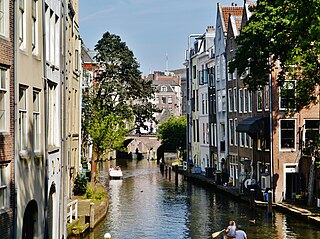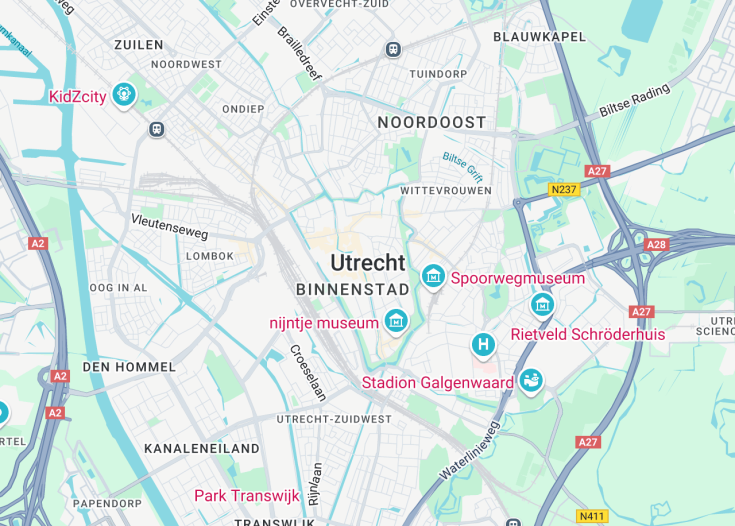Nestled in the heart of the Netherlands, Utrecht boasts a blend of rich history and vibrant contemporary culture, making it a captivating destination for travelers. Known for its medieval old town, iconic Dom Tower, and picturesque canals lined with cafes and shops, the city offers a unique mix of old-world charm and modern sophistication. Utrecht’s cultural landscape is bustling with museums, galleries, and a dynamic music scene, alongside a diverse culinary landscape that satisfies every palate.
When in Utrecht, don’t miss a canal tour; it’s the best way to experience the city’s historic charm and architectural marvels from a unique perspective.
Plan your visit to coincide with one of Utrecht’s vibrant festivals, like the Nederlands Film Festival, to immerse yourself fully in the local culture and arts.
Top things to do & see in Utrecht
Select the following sights and activities to discover best tickets and tours available in Utrecht.
Utrecht: A Cultural Heart in the Netherlands
| Country | Netherlands |
| Time in Utrecht | GMT+1 |
| Language spoken | Dutch |
| Population | 357,179 (source: CBS) |
| Currency | Euro (€, EUR) |
| Airports |
|
Utrecht, located in the central part of the Netherlands, is one of the country’s oldest cities and is steeped in history that dates back to Roman times. Known as the religious center of the Netherlands for many centuries, Utrecht has a vibrant, character-filled cityscape that harmoniously blends medieval architecture with modern design.
The city’s centerpiece is the Dom Tower, the tallest church tower in the Netherlands, offering panoramic views of the city’s intricate canal system and the many historic buildings that line it. Utrecht’s canals, with their unique wharves and wharf cellars, create an attractive waterside atmosphere that offers a bustling café culture and boutique shopping experiences by the water.
Culturally, Utrecht does not disappoint. It hosts several prestigious events including the Netherlands Film Festival and is home to many Dutch institutions such as the Rietveld Schröder House, a UNESCO World Heritage site, and cornerstone of De Stijl art movement. In addition, Utrecht is a burgeoning scene for innovative culinary experiences and boasts numerous high-quality restaurants and quirky cafes.
Utrecht is also a prominent educational hub, anchored by Utrecht University, one of the oldest universities in the Netherlands. This youthful presence contributes to the city’s lively atmosphere, with numerous cultural events, festivals, and an active nightlife driven by its student community.
Despite its historic roots, Utrecht is continuously evolving. It’s recognized for its sustainability efforts and was awarded the most vibrant inner-city climate award in the EU. With extensive pedestrian zones, bike paths, and green initiatives, Utrecht exemplifies how historic cities can transition into sustainable future cities.
Whether you’re drawn by its rich history, unique architecture, cultural dynamism, or green policies, Utrecht offers a captivating experience to every visitor and resident alike. Its unparalleled charm and forward-thinking mindset make it a must-visit destination in the Netherlands.
Where is Utrecht?
Situated in the heart of the Netherlands, Utrecht is centrally located and highly accessible from all major Dutch cities.
Distances:
| Route | Distance by car | Time by car |
|---|---|---|
| Amsterdam to Utrecht | 24 miles / 39 km | 30 minutes |
| Rotterdam to Utrecht | 38 miles / 61 km | 45 minutes |
| The Hague to Utrecht | 40 miles / 65 km | 50 minutes |
What is Utrecht famous for?
Utrecht is renowned for its rich historical heritage, the Dom Tower, and its distinctive canal system distinguished by inner city canals with unique wharves and wharf cellars now housing restaurants and cafes right at water level.
History
Early Settlements and Roman Era (c. 50 A.D – 500 A.D)
The area now known as Utrecht was first settled by Romans around 50 A.D. The strategic location along the Rhine River made it an ideal military outpost, and a fort named Trajectum was established to protect the northern borders of the Roman Empire. This fort evolved into a significant trading center where Romans and local tribes, like the Batavians and the Frisians, interacted.
Early Middle Ages (500 – 1000)
With the fall of the Roman Empire, the region came under the control of the Franks. Christianity began to spread during this period, and by the 7th century, a bishopric was established in Utrecht, making it the religious center of the northern Netherlands. The growth of the Church significantly influenced the development of the town, which by the early Middle Ages began to take shape around the cathedral.
The High Middle Ages (1000 – 1300)
During this period, Utrecht became one of the most important centers of power in the Netherlands, with the bishop holding significant secular authority. The construction of the St. Martin’s Cathedral began in 1254, symbolizing the city’s prosperity and importance. Utrecht also became a hub for learning and culture, with the establishment of schools and the influx of scholars.
Late Middle Ages and Renaissance (1300 – 1600)
Utrecht experienced both growth and challenges during these centuries. The city was a founding member of the Hanseatic League in the 14th century, which enhanced its trade connections. However, it also faced conflicts such as the Utrecht Civil War (1481-1483) and struggles between the city’s merchants and the bishop. By the end of the Renaissance, the city started to lose its preeminent position to other Dutch cities like Amsterdam.
Modern Age (1600 – Present)
During the Dutch Golden Age, Utrecht remained a significant cultural and academic center, despite its commercial decline. The University of Utrecht, established in 1636, is one of the oldest in the Netherlands. The 19th and 20th centuries brought industrialization, and Utrecht transformed into a modern urban center with the development of transportation networks. Today, Utrecht is known for its historic architecture, vibrant cultural scene, and as a dynamic, modern city deeply rooted in its past.
Visit Utrecht
Attractions and Activities
Exploring Utrecht offers a delightful blend of historic charm and contemporary culture. Key attractions include the iconic Dom Tower, a climb which rewards visitors with panoramic views of the city. The Utrecht Centraal Museum provides insights into the art, culture, and history of Utrecht. For a unique experience, visit the Rietveld Schröder House, a UNESCO World Heritage site and an icon of the Modern Movement in architecture.
- Dom Tower
- Centraal Museum
- Rietveld Schröder House
- Canal tours on the historic Utrecht canals
- Vibrant local markets such as the Flower Market on Janskerkhof
Festivals and Events
Utrecht buzzes with events throughout the year. The Festival Oude Muziek, held in late August, is renowned for performances of early music. The Nederlands Film Festival in September showcases Dutch cinema talents. Each spring, the Koninginnedag (King’s Day) celebrations bring the city to life with street parties and open-air markets.
Best time to visit Utrecht
The ideal times to visit Utrecht are late spring (April to June) and early autumn (September to October). Weather during these months is pleasant, and the city’s parks and gardens are in full bloom or beautifully colored, providing a perfect backdrop for your visit.
Is Utrecht worth visiting?
Utrecht is undeniably worth visiting. This city offers a unique blend of deep-rooted history intertwined with lively modern culture and innovation. Its relatively compact size makes it easy to explore, and it is less crowded than other Dutch cities like Amsterdam, making it a peaceful yet enriching destination for travelers seeking both relaxation and a rich influx of culture and history.










